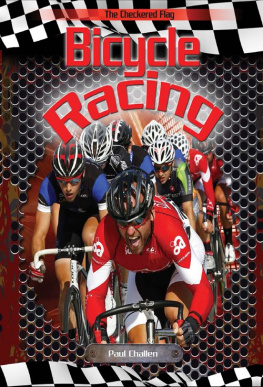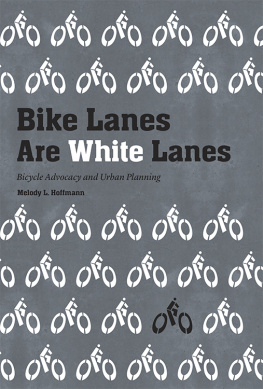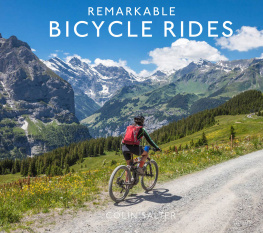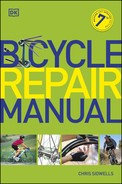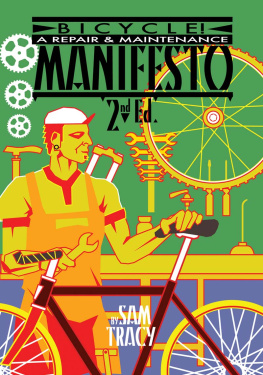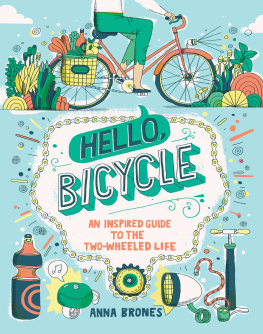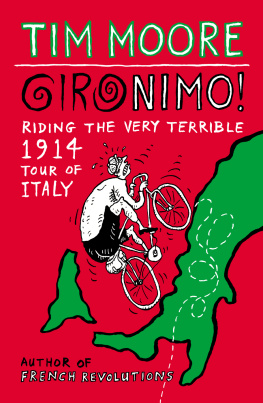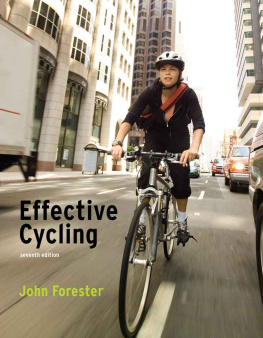Bicycle Voyages:
Elements of a Successful CyclingTour
By Emily W. Metzloff
Copyright 2012 Emily W. Metzloff
Smashwords Edition
All Rights Reserved
This ebook is licensed for yourpersonal enjoyment only. This ebook may not be resold or given awayto other people. If you would like to share this book with anotherperson, please purchase an additional copy for each recipient. Ifyoure reading this book and did not purchase it, or it was notpurchased for your use only, than please return to Smashwords.comand purchase your own copy. Thank you for respecting the work ofthis author.
Table ofContents
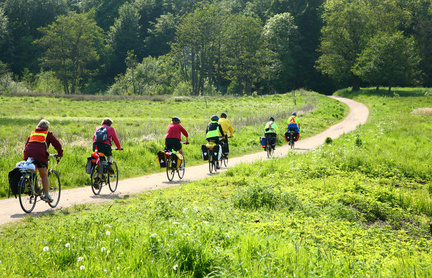
Forward
If you are like most touringcyclists, you have probably heard from many people about how crazyyou and your pipedreams are. Why would anyone want to ride that faron a bike? Why would anyone want to put themselves through suchphysical discomfort and potential risk? If you are reading this,you probably already know the answers to these questions. Thedesire to travel is human nature. So is the desire for challengeand adventure. We yearn to see newlandscapes, set new limits, and breathe new air. And when all ofthis comes together as the endorphins buzz after a long climb, itbecomes clear that the real crazies are the ones who stayed on thecouch.
Touring cyclists embark ontours for a wide variety of reasons: some set out to findthemselves; others want to test their physical limits; othersaspire towards a broader worldly understanding; others just seek agood, old-fashioned adventure. Whatever set of reasons you bring tothe table, this book will give you inspiration and practicalknowledge, and point you towards resources that will help you plana successful and fulfilling tour. The book will cover everythingyou need to know, including route planning, equipment, rules of theroad, logistical details of your tour, injury prevention,nutrition, and even ways to fund your trip.
My cycling experiences haveignited in me a lifelong passion that I want to share with anyonewho has had pipedreams of touring. I have ridden somewhere in theneighborhood of 15,000 miles in six countries and 25 states. I havetoured solo, with friends, and have even lead groups of teenagerson tours. My 3000-mile tour from Honduras to San Diego whet myappetite for extended touring, and the list of tours I still wantto do is forever expanding.
It is my hope that this book willboth inspire and prepare first-time touring cyclists to get out andride. It is never too late. Not even if youre 70. If you dontbelieve me, just skip ahead to Chapter 10 when I talk about someamazing cyclists I met in Belize. People from all walks of lifecontinue to discover the joys of the two-wheeled journey. I hopethat you are next. Go discover the many stories that awaityou!
EmilyMetzloff
Chapter 1: Choosing YourRoute
Route planning for touring cyclists is much akin tobeing a kid in a candy store. Bike tours are born as you begin toimagine and piece together the breathtaking landscapes, the exoticlocales, and the local flavor you will experience on the road.
Epic Routes
There are indeed infinitepossibilities all over the world to craft the route of your dreams.There are also many well-traveled tours that have beckoned to manytouring cyclists over the years because of their beauty, theirhistory, and their epic quality. Here is a quick sampling of someof these famous routes to get your wheels spinning.
Across America
A cross-country trip is the quintessentialbike tour for many touring cyclists. Whether you seek forests,vineyards, coastal riding, mountain vistas, or historical interestpoints, the US offers miles upon miles of beautiful and diverseriding. There are infinite ways to traverse the US, so start byzeroing in on a few places you really want to experience.
If you want to follow in the tracks of othertrans-continental cyclists, the Adventure Cycling Association hasmapped out three distinct routes across the country: The NorthernTier, The Southern Tier, and a middle tier, called Transamerica.Each route offers a variety of terrain, scenery, and distinctcultural background.
The riding window for each route differs dueto varying weather conditions along each route. The Southern Tieris doable all year long, although you will most likely encounterexcessive heat during summer months. However, there is a muchnarrower window for the Northern Tier, as the infamousGoing-to-The-Sun road through Glacier National Park is only openfrom June through October, depending on snowfall. The TransAmericaroute is recommended from May through September, as cold and snowyweather plague some areas of this route during earlier or latermonths.
The shortest of these three routes is theSouthern Tier, at 3,058 miles. The other two routes are just over4,200 miles. Each route has significant elevation change, despitewhat you might imagine about the Southern Tier, whose highest passthrough New Mexico tops out at 8,000 feet.
Another excellent route youcould follow is the Race Across America route. Thisroute was designed for a famous long distance race across thecountry beginning in San Diego, and ending in Washington, DC. RAAMriders have vehicle support from crews, so services are not asplentifully available along some portions of the route. However,riders pass through checkpoints in towns that are never more than90 miles apart. All of the maps, written directions and GPS datafiles are available to anyone free of charge.
Additionally, severalauthors have published books detailing various routes across thecountry. Lue and Shannon ChristiansCycling Across North America: A Leisurely Route from Coast toCoastoffers step-by-stepdirections for a cross-country route that begins in SouthernCalifornia and ends up in Maine. As the name suggests, they find aroute with as little elevation change as possible.
While there is some pieceof mind that comes from following an established bicycle route,others will prefer to forge their own way with a few highway mapscoupled with some local advice. No matter which route you decide,it is hard to imagine a better way to experience the diversity andbeauty of the USA.
Pacific Coast Route
Cyclists can see some of themost gorgeous vistas in our country along the Pacific Coast routethat follows the stunning coastline for 2000 miles. Pass by beachesfull of sleepy elephant seals resting for their next migration,take a day trip to sample California wines at one of many vineriesyou will pass, and camp in hiker-biker sites at state parks. Theroute is very popular among touring cyclists, due to its beauty andaccommodations for touring cyclists. For more detailed routeinformation, you can use use ACA maps, or state DOT maps forthe Oregon Section and California Section (Route1).
For the ambitious tourist who wants tocontinue south into Mexico, you have much adventure and beauty onthe road ahead. Baja California offers some very impressive riding:giant cacti, sparkling blue water, and the best fish tacos in theworld. The traffic is relatively light in most areas, which makesfor long stretches of riding without cars, although a speedingtruck will probably take away your breath more than once on thenarrow roads. There are also a few long stretches between towns, socyclists need to carry plenty of food and water, and be ready forsome creative camping.
If you are still yearning for more, you canhop on the ferry in Cabo San Lucas, or in La Paz to get to themainland. Mexicos Pacific Coast Highway 200 continues about 1200miles down to Mexicos southern border with Guatemala. You willpass by secluded fishing towns, giant vacation resorts, andexperience Mexican culture in a way that few tourists get to. A fewbrave touring cyclists have even continued on the Pan-AmericanHighway all the way down to the southern tip of Argentina. However,the Darien Gap in Panama does require a boat or plane to get fromNorth America to South America. Scott Napier completed the entirePan-American Highway from Alaska to the bottom of Argentina in arecord-breaking 125 days!
Next page

